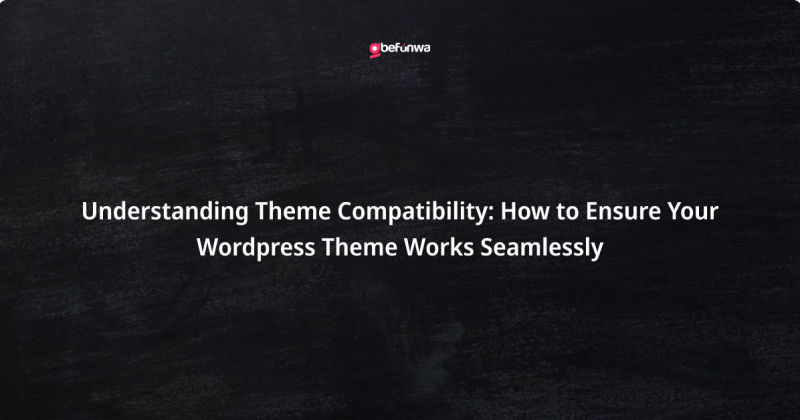
WordPress themes are the backbone of your website’s design and functionality. Choosing the right theme sets the tone for your site and influences user experience. However, simply selecting a theme isn’t enough. Ensuring seamless compatibility with WordPress itself and your desired plugins is paramount. Here’s how to ensure your WordPress theme works seamlessly.
Selecting a well-coded, reputable theme is the first step to ensuring compatibility. Look for themes from trusted developers with positive reviews and frequent updates. Premium themes often offer better support and more features, but there are also many quality free themes available.
Before committing to a theme, verify its compatibility with your version of WordPress. Themes should clearly state the WordPress version they support. Using an outdated theme can lead to compatibility issues and security vulnerabilities.
Ensure your chosen theme is compatible with major web browsers such as Google Chrome, Mozilla Firefox, Safari, and Microsoft Edge. Test your site on different browsers to identify any display or functionality issues.
In today’s mobile-driven world, responsive design is essential. Ensure your theme adapts seamlessly to various screen sizes and devices, including smartphones, tablets, and desktops. Test responsiveness using tools like Google’s Mobile-Friendly Test.
Page speed not only impacts user experience but also affects search engine rankings. Choose a lightweight theme optimized for speed, and use tools like Google PageSpeed Insights or GTmetrix to assess your site’s performance.
Thoroughly review the theme documentation provided by the developer. Documentation should include installation instructions, customization options, and troubleshooting tips. Familiarize yourself with the theme’s features and functionality to leverage them effectively.
While customization is tempting, avoid making excessive modifications to the theme’s core files. Instead, use child themes or custom CSS to maintain compatibility and facilitate future updates. Backup your site regularly to safeguard against data loss.
Plugins extend the functionality of your WordPress site, but not all plugins are compatible with every theme. Before installing a plugin, verify its compatibility with your theme by checking reviews, documentation, or contacting the developer. Test plugins thoroughly to ensure they work as expected with your theme.
Keep your theme, WordPress core, and plugins up to date to ensure compatibility and security. Developers release updates to address bugs, add new features, and improve performance. Enable automatic updates where possible, but always backup your site before making changes.
Regularly monitor your site for performance issues, broken links, and errors using tools like Google Analytics, Google Search Console, or WordPress plugins. Address any issues promptly to maintain a seamless user experience and prevent negative impacts on your site’s ranking.
If you encounter compatibility issues or technical challenges beyond your expertise, seek assistance from professional developers or support forums. WordPress community forums, developer documentation, and third-party support services can provide valuable guidance and solutions.
Stay informed about WordPress best practices, security updates, and emerging trends in web design and development. Join online communities, attend workshops or webinars, and follow reputable blogs and forums to stay updated and continuously improve your site.
Ensuring seamless compatibility between your WordPress theme, WordPress core, and plugins is essential for a successful website. By choosing a quality theme, verifying compatibility, checking browser and device responsiveness, optimizing page speed, reviewing documentation, customizing carefully, testing plugins, conducting regular updates, monitoring performance, seeking professional support when needed, and staying informed, you can create a user-friendly, functional, and secure website that effectively communicates your brand message and achieves your business goals.
Deborah Oludimu is an experienced content writer with 3+ years of experience. She is skilled in research, writing, and editing to produce high-quality, engaging content across industries. Deborah is passionate about creating content that informs and inspires
© 2025 GBEFUNWA.COM. All rights reserved.
The WordPress® trademarks are the intellectual property of the WordPress Foundation, and the Woo® and WooCommerce® trademarks are the intellectual property of WooCommerce, Inc. Uses of the WordPress®, Woo®, and WooCommerce® names in this website are for identification purposes only and do not imply an endorsement by WordPress Foundation or WooCommerce, Inc. gbefunwa is not endorsed or owned by, or affiliated with, the WordPress Foundation or WooCommerce, Inc.